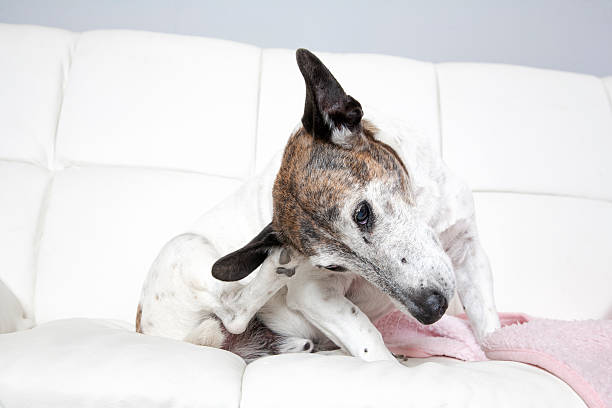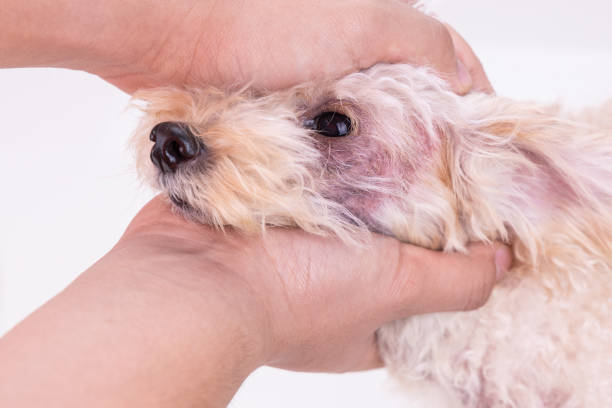It’s not unusual for dogs to gain weight. There could be numerous reasons why your dog is heavier than usual, but occasionally, these fat deposits in dogs may arise from another source. Get more information about this circumstance and what to do if you notice them on your canine friend!
Fatty lumps on dogs are most commonly associated with obesity-related health concerns such as diabetes or pancreatitis. But they can also indicate other issues from skin conditions like mange to tumours or infections in the abdomen or lymph nodes near the abdominal cavity.
This article will give you a better understanding of what causes these lumpy bumps and how to best treat them when they’re found on your pet.
If it’s mange…
Mange is a parasitic skin condition caused by tiny mites. Dogs can contract mange from other pets or wildlife in their environment. Still, the most common cause is contact with an infected animal through physical contact, inhalation of dust containing mite faeces, or ingestion of eggs passed through the stool.
If your dog has mange, the mites will burrow into the skin, which can cause infection and inflammation. As your dog’s immune system fights back against the infestation, you may notice small scabs or sores on your dog’s body as well as swelling, thickened skin and general skin irritation. Dogs with mange protect themselves by biting and licking at their skin, leading to open sores on the skin that often look hairless and red.
Your veterinarian will run some tests to confirm that your dog has mange before beginning treatment, but if you suspect it, talk to your vet about the best course of action for your pet.


If it’s diabetes…
Diabetes mellitus is a common yet severe illness that affects the way your dog’s body uses sugar. In dogs, diabetes can cause a host of symptoms, from increased thirst and hunger despite weight loss to urinary incontinence and lethargy. If you notice fatty lumps on your dog’s body along with other diabetes symptoms like drinking excessively or urinating more frequently, make an appointment with your veterinarian.
During the physical examination, they’ll also look for other symptoms like increased thirst and hunger, weight loss despite normal or increased appetite, lethargy and changes in behaviour.


If it’s pancreatitis…
Just as in humans, dogs can suffer from pancreatitis too. Pancreatitis occurred when the pancreatic enzymes meant to digest food begin to attack the organ itself. This can cause inflammation that leads to swelling, pain and impaired digestion. Dogs with pancreatitis often have fatty lumps near their abdomens and other symptoms like losing appetite and lethargy.
Your veterinarian will take a sample of your dog’s blood and stool to see if they have pancreatitis and will also run other tests to find out why it happened. The treatment for pancreatitis depends on the cause, but your vet may recommend a temporary change in diet as well as medication, supplements or intravenous fluids.


If it’s cancer…
Cancer can develop anywhere in the body and is most often diagnosed in middle-aged to older dogs. Clinical signs can include lumps, swelling, sores that won’t heal, skin colour or thickness changes, a change in appetite or behaviour, and weight loss despite an increased appetite. Treatment will depend on where cancer originated and what form of cancer it is, but surgery may be an option in some cases.


If it’s a tumour…
Tumours result from uncontrolled cell growth and can develop in almost any part of your dog’s body. Some tumours can spread to other areas like the lymph nodes or lungs and cause blockage or fluid buildup in these organs. Depending on the type of tumour, your vet may be able to remove it altogether with surgery, but some are too extensive or have already spread to other areas.
Treatment will depend on the size and location of the tumour and how far cancer has progressed. Your vet may also recommend chemotherapy or radiation therapy to shrink tumours before they can be removed surgically.
If it’s not cancer…
Several relatively common conditions can cause your dog to develop fatty lumps on their bodies, including cancer, infection and injury. Other possible causes include additional forms of cancer like ovarian cancer in female dogs or testicular tumours in male dogs. If you’re worried about the lump on your dog’s body, make an appointment with your veterinarian to get it checked out.
Why do some dogs have more lumps than others?
It depends on the dog’s age, metabolism, diet and overall health.
Concerned owners often ask, “Why do some dogs have more lumps than others?” The answer to this question is quite simple. It all depends on what diet they are eating or how fast their metabolism or any other number of factors that contribute to the anatomy of your specific canine friend.
This is a particular question that requires an individual answer- if you’re concerned about what could be causing your pup’s fatty lump issues, talk with a veterinarian at your earliest convenience! When it comes down to it, no two dogs will process food in the same way as each other.
If you’re at all worried or suspect that there might be an issue, the best thing to do is take your dog to a local veterinarian.
What can I do to help my dog’s lumps go away?
There are several things you can do to help your dog’s lumps go away. You might consider making an appointment with a local veterinarian, as they will be able to diagnose and treat the problem best. Additionally, there are some natural treatments on the market that may provide some relief:
Fish oil: Eating plenty of omega-3 fatty acids from fish can reduce inflammation linked with cancer and diabetes. In recent decades, efforts have been made to develop food supplements that contain these fats for dogs with inflammatory diseases or where expensive dietary requirements make it difficult for owners to follow these diets. The theory is that following a diet high in omega-three fatty acids can make healthy skin more supple, shiny coats more lustrous, and aid the body’s ability to fight off cancer cells.
Borage oil: This oil contains gamma-linolenic acid, which is believed to have anti-inflammatory and antioxidant effects on canine bodies. It has also been found to aid in the reduction of itching and inflammation, especially for dogs with certain types of allergies.
Chondroitin: This supplement is made from cartilage and can reduce knee pain in dogs. It’s also known to help develop new cells to fight off cancer cells and prevent metastases, which could lead to longer life expectancies.
Glucosamine: Glucosamine has been shown to effectively treat arthritis pain in dogs and reduce canine osteoarthritis progression.


What should I do if I find fatty lumps on my dog?
The two most important things to keep in mind about fatty liver disease in canines is that, first of all, it’s prevalent and second, there are several ways you can help your dog if they are suffering from this condition.
The most important thing to do is get your dog to see a veterinarian for an official diagnosis. The sooner you get them diagnosed, the better you’ll be able to provide treatment that will hopefully resolve their fatty liver disease.
What’s the prognosis if my dog has fatty lumps?
If your canine friend is diagnosed with a fatty liver-related condition, the prognosis can vary from case to case. A lifestyle change may provide enough relief that your vet may not recommend any additional treatment options in many cases.
Are fatty liver-related conditions in dogs common?
Yes, fatty liver disease is widespread in dogs. If your canine friend starts experiencing the symptoms of fatty liver, don’t hesitate to contact a local veterinarian as soon as possible.
Conclusion
If you think your canine friend has fatty lumps on their body, take them in for a checkup at your local veterinary clinic. Your vet will tell you what is causing the lump and if treatment or further testing is necessary.


